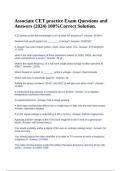Samenvatting
Summary International Business Strategy - Deel 1 - MBA international relations KU Leuven
KU Leuven - Handelswetenschappen - MBA International Relations - International Business and Strategy. Volledige samenvatting lesnotities International Business And Strategy (IBS). Schooljaar: 2016/2017. Prof: A. Sels Geslaagd met samenvatting
[Meer zien]












